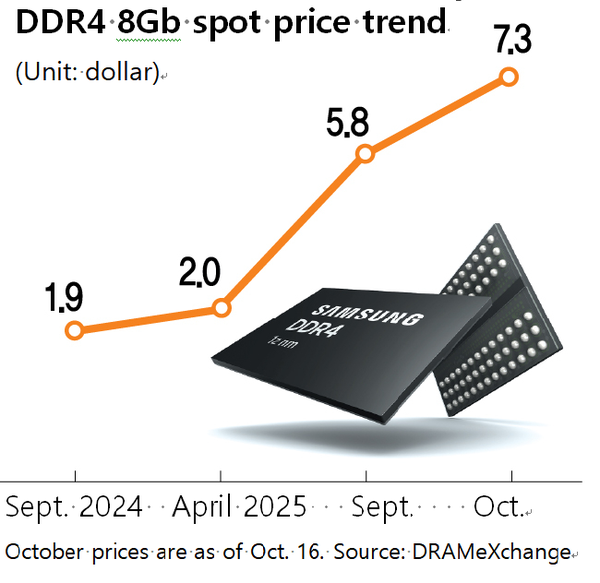October Sees 0.2% Rise in Producer Prices in Korea

Producer prices rose for the second consecutive month due to rising semiconductor prices.
The October producer price index announced by the Bank of Korea on Nov. 21 was 120.82 (2020 level = 100), up 0.2% from the previous month. Compared to the same month last year, it jumped 1.5%, with the increase expanding.
Producer prices rose for two consecutive months in June (0.1%) and July (0.4%), then declined slightly in August (-0.1%), but showed an upward trend again for two consecutive months in September and October. Producer prices are wholesale prices supplied to the market and are typically reflected in consumer prices with a lag of 1-3 months.
By item, industrial goods rose 0.5%, leading the price increase. Computer, electronics and optical equipment (3.9%) and primary metal products (1.3%) showed strength. Service prices also continued their upward trend, rising 0.5%. Financial and insurance services (2.9%) and restaurant and accommodation services (0.5%) led the price increases.
In contrast, electricity, gas, water and waste sectors fell 0.6%. Industrial city gas (-5.4%) and waste collection and transportation (-1.6%) prices declined, pulling down the overall index.
Agricultural, forestry and fishery products fell 4.2% from the previous month, acting as a factor for price decline. This was due to significant drops in agricultural products (-5.5%) and livestock products (-5.4%) prices.
Among detailed items, DRAM (28.1%), flash memory (41.2%), cuttlefish (18.5%), gold bullion (13.3%), and hotels (10.7%) showed large increases.
Lee Moon-hee, head of the Bank of Korea’s price statistics team, explained, “Memory semiconductor demand, including DRAM and flash memory, continued to be strong, causing semiconductor prices to rise significantly.”
The domestic supply price index, which measures price changes including imports, rose 0.9% from September.
Raw materials (1.5%), intermediate goods (1.0%), and final goods (0.3%) all increased, marking the largest increase in 1 year and 6 months since April last year (1.0%).
The October total output price index, which includes domestic shipments plus exports, rose 1.1%. This was also the largest increase since April last year (1.2%).
Team leader Lee explained, “In addition to rising semiconductor prices, export prices and import prices included in the calculation of supply price index and total output price index were both affected by rising exchange rates.”
Regarding future producer price trends, he explained, “Although the won-dollar exchange rate has risen 2% this month, upward and downward factors are mixed as industrial city gas rate cuts, potential slowdown in travel-related service demand that was a rising factor in October, and other factors work together.”


